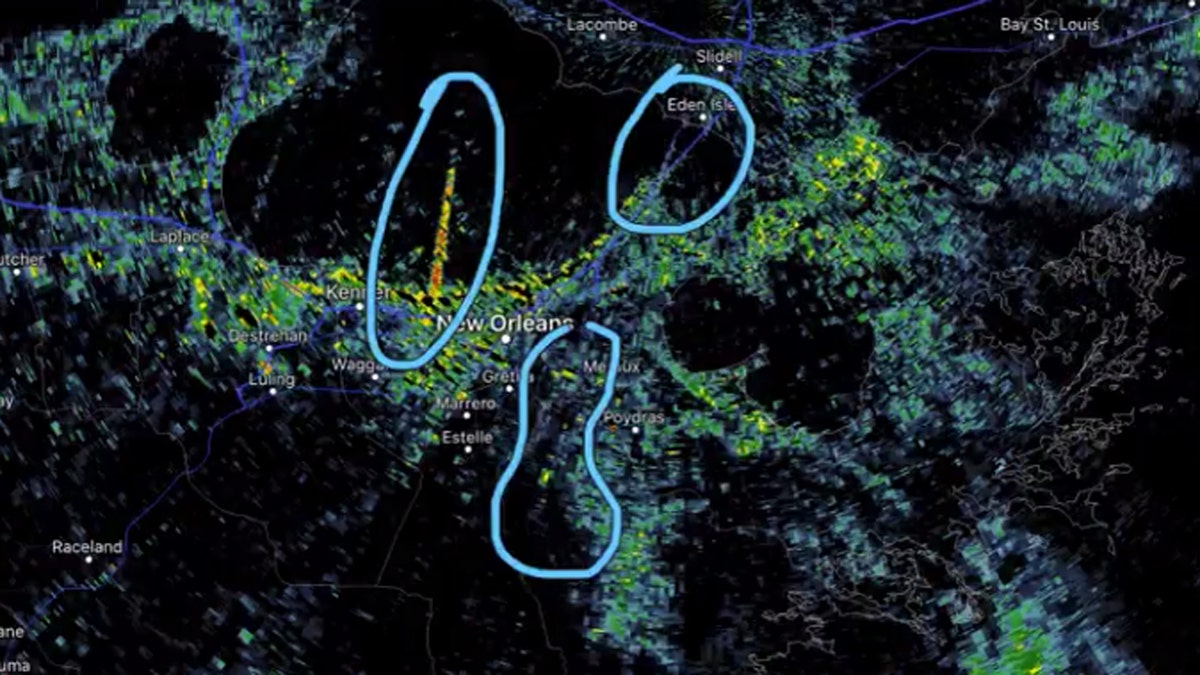Fox News Flash top headlines for May 13
Fox News Flash top headlines are here. Check out what's clicking on Foxnews.com.
Get all the latest news on coronavirus and more delivered daily to your inbox. Sign up here.
The cool temperatures that settled across the Southeast earlier this week allowed forecasters to pick up something other than rain and thunderstorms in the New Orleans area.
The National Weather Service (NWS) forecast office in New Orleans shared in a series of tweets Monday morning the result of a temperature infusion causing "radar beam ducting."
"It may not look like much on radar this morning, but a pretty cool phenomenon is occurring right before our eyes," the NWS said.
UTAH WILDFIRE BURNS 200 ACRES, JUVENILE IN CUSTODY ON SUSPICION OF SPARKING FIRE, 3 OTHER BLAZES
According to the NWS, in radar beam ducting, the beam bends back to Earth under a strong temperature inversion.
A temperature inversion occurs when the surface of the Earth is cooler than higher up in the atmosphere. In a normal situation, the farther into the atmosphere, the cooler the temperature, according to NOAA.
The phenomenon usually occurs in the morning, when temperatures at ground level are cooler, causing the radar beam to be reflected toward the ground.
On Monday morning, the Lake Pontchartrain Causeway and Interstate 10 Twin Span Bridge appeared on the radar.

Large bridge in the New Orleans area and even some ships on the Mississippi River were picked up by weather radar on Monday. (NWS New Orleans)
The NWS said that even a few ships traveling on the Mississippi River near Belle Chasse could be picked up.
When a temperature inversion is occurring, the air prevented from rising helps bend the radar beam. The NWS said in radar beam ducting, the beam "really bends more than normal."
HURRICANE SEASON MAY START EARLY WITH TROPICAL SYSTEM BREWING OFF FLORIDA, BAHAMAS
"If the atmospheric condition that causes superrefraction bends the beam equal to or more than the earth's curvature then a condition called ducting, or trapping, occurs," the Weather Service states. "Ducting often leads to false echoes also known as anomalous propagation or simply AP."
Such echoes on radar would be the bridges or ships as seen in New Orleans on Monday.
CLICK HERE FOR MORE WEATHER COVERAGE FROM FOX NEWS
"Optimal environment for radar ducting!" the forecast office tweeted.



